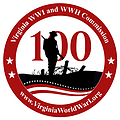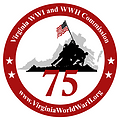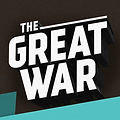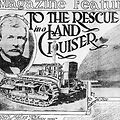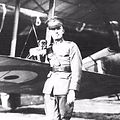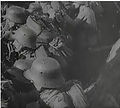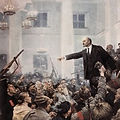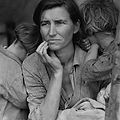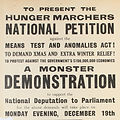Using photos and primary and secondary source accounts, students create a photo exhibit displaying the effects of new technology on soldiers fighting the war. Created by the in alignment with Virginia's SOLs.
Lesson examining the developments armies were forced to make during WWI both on and off the battlefield and why they made them.
Activity examining warfare and technology through photographs from the war.
Students analyze and compare accounts from the first day of the Battle of the Somme.
Students examine an interactive map of the American advancement during the Meuse Argonne Offensive. See also Teaching and Mapping the Geography of the Meuse Argonne Offensive.
Online module examining the relationship between WWI and the Russian Revolution, with suggested discussion topics and classroom activities.
Online module examining the causes and consequences of the global depression, with suggested discussion topics and classroom activities.
Lesson on the rise of Nazism in the aftermath of WWI.
Lesson helping students understand the conditions in the Weimar Republic that resulted in Germany’s transition from a democracy to a dictatorship. See also the following lesson on the Weimar Republic.
Aligned to Virginia's Standards of Learning for History and Social Science
Lesson Plans
Resources
10th Grade
SOL WHII.10a: The student will apply social science skills to understand World War I and its worldwide impact by (a) explaining economic causes, and political causes, and identifying major leaders of the war, with emphasis on Woodrow Wilson and Kaiser Wilhelm II.
SOL WHII.10b: The student will apply social science skills to understand World War I and its worldwide impact by (b) describing the location of major battles and the role of new technologies.
SOL WHII.10c: The student will apply social science skills to understand World War I and its worldwide impact by (c) analyzing and explaining the terms of the Treaty of Versailles and the actions of the League of Nations with emphasis on the mandate system.
SOL WHII.10d: The student will apply social science skills to understand World War I and its worldwide impact by (d) citing causes and consequences of the Russian Revolution.
SOL WHII.10e: The student will apply social science skills to understand World War I and its worldwide impact by (e) explaining the causes and assessing the impact of worldwide depression in the 1930s.
SOL WHII.10f: The student will apply social science skills to understand World War I and its worldwide impact by (f) examining the rise of totalitarianism.
Breaking News: Austrian Heir and His Wife Murdered
National WWI Museum and Memorial
The assassination of Archduke Franz Ferdinand presented as a modern-day news story.
Topics in Chronicling America: WWI Declarations
A collection of newspaper articles announcing declarations of war at the start of WWI.
- Eyewitness account from Borijove Jevtic, accomplice to the assassination
- Eyewitness account from Count Franz von Harrach, bodyguard to Archduke Franz Ferdinand
Flying Yanks: American Airmen in WWI
American Battle Monuments Commission
An interactive look at the evolution of aviation during WWI.
American Battle Monuments Commission
Battle interactive following the paths of American forces in 1918 as they fought alongside the Allies to liberate Belgium and northeastern France.
WWI combat footage from the Steven Spielberg Film and Video Archive.
- Americans Take Belleau Wood - an account from a New York Times war correspondent
- Soldier's memoir recounting the first gas attack
- The Peace Treaty of Versailles
- The Covenant of the League of Nations
- President Wilson's Address in Favor of the League of Nations
Archive of primary sources relating to significant events in Soviet history, including the Russian Revolution.
The Great War Channel's profile of Nicholas II and the end of the Russian Empire.
War and Revolution in Russia 1914 - 1921
The BBC's overview of the years surrounding the Revolution.
Primary sources related to the Great Depression in the United States.
Primary sources from 1930s Britain, many reflecting the effects of the golbal depression.
From Socialist to Fascist: Benito Mussolini in WWI
Video examining Mussolini's early political life and rise to power.
Hitler Speaking to Mass Crowds
The Great War Channel's profile of Nicholas II and the end of the Russian Empire.
Students use newspaper headlines, quotes, photos, political cartoons, and posters to identify mystery countries and learn the roles and perspectives of European countries at the start of the war.
Students are assigned a profile of an individual who played a role in the conflict, and they keep a journal from that person's perspective throughout the WWI unit.
Lesson complementing the PBS American Experience documentary The Great War, examining President Wilson's reasons for entering the war.
Using political cartoons, students investigate the issues and concerns surrounding the treaty process.
Students use primary sources, maps, and supporting documents to examine the treaty and the troubled postwar peace that followed.
Students learn about the League of Nations and the surrounding controversy through editorial cartoons.
An investigation into why Congress rejected the League of Nations. Students compare speeches given by Woodrow Wilson and Henry Cabot Lodge.
